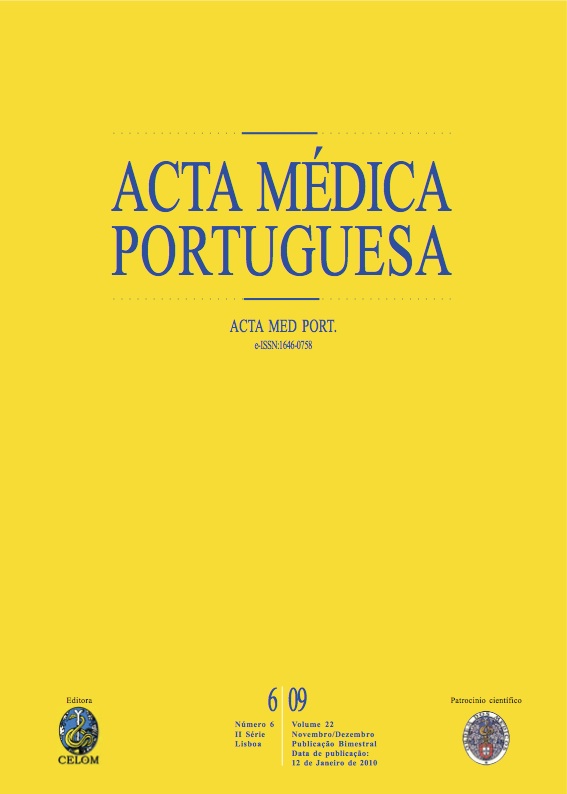Streptococcal pharyngitis: clinical suspicion versus diagnosis.
DOI:
https://doi.org/10.20344/amp.1733Abstract
Pharyngitis is a very prevalent illness in the ambulatory care setting. Its diagnosis is a challenge, especially in the differentiation between the viric and streptococcal causes.A formulary was made to register the clinical and laboratory data; a throat swab for culture was obtained from all the children who presented to the emergency department with sore throat and/or signs of pharyngitis/tonsillitis, for a period of three months (15th of April to 15th of July of 2006). The signs and symptoms, prescribed antibiotherapy and frequency of false diagnostics were evaluated and the clinical suspicion compared with the diagnosis by culture.158 children were evaluated, with a median age of four years, with a male predominance (56%). The period that showed the greatest number of cases was the first fifteen days of May. Forty-three percent of the cultures were positive for Streptococcus pyogenes. The more frequent signs and symptoms in pharyngitis were pharyngeal erythema (98%), fever (86%) and sore throat (78%). A significative statistical difference was found for cough, scarlatiniform rash, tonsillar exudate, palatal petechiae and tonsillar swelling. Of the signs and symptoms studied, only three of them presented a positive predictive value superior to 50%: scarlatiniform rash (85%), palatal petechiae (63%) and cough (57%). The presence of tonsillar exudate had a positive predictive value for non-streptococcal pharyngitis of 70%. Fifty-three percent of the doctors considered streptococcal pharyngitis highly probable, and from this, 56% had a positive culture for Streptococcus. Those who considered a low probability, the culture was positive in 28%. There were 37% of false diagnosis.The distinction between streptococcal pharyngitis and non-streptococcal pharyngitis is not always correct when based on clinical characteristics. The use of diagnostic tests is important in order to avoid unnecessary antibiotherapy as well as to allow the correct use in the positive cases.Downloads
Downloads
How to Cite
Issue
Section
License
All the articles published in the AMP are open access and comply with the requirements of funding agencies or academic institutions. The AMP is governed by the terms of the Creative Commons ‘Attribution – Non-Commercial Use - (CC-BY-NC)’ license, regarding the use by third parties.
It is the author’s responsibility to obtain approval for the reproduction of figures, tables, etc. from other publications.
Upon acceptance of an article for publication, the authors will be asked to complete the ICMJE “Copyright Liability and Copyright Sharing Statement “(http://www.actamedicaportuguesa.com/info/AMP-NormasPublicacao.pdf) and the “Declaration of Potential Conflicts of Interest” (http:// www.icmje.org/conflicts-of-interest). An e-mail will be sent to the corresponding author to acknowledge receipt of the manuscript.
After publication, the authors are authorised to make their articles available in repositories of their institutions of origin, as long as they always mention where they were published and according to the Creative Commons license.









